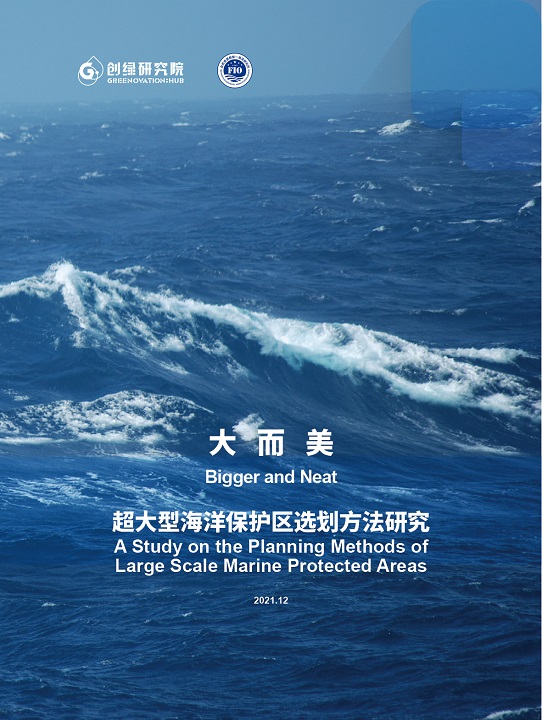
New Developments in MPA Designation
The marine ecosystems of our planet are going through profound changes as the ocean is facing persistent and significant threats from overfishing, environmental pollution, and habitat destruction, as well as the impacts of climate change (such as warming and acidification). These stressors will continue to negatively impact the ocean, its resources, and humanity depending on the ocean for survival. Globally, Marine Protected Areas (MPAs) have been one of the most effective tools to protect marine biodiversity and ecosystems and to manage the fisheries. With the accumulation and deepening of experiences and practices, marine protection and management experts have realized that restoring biodiversity requires protecting sufficiently large space to ensure ecological connectivity, habitat diversity, and proportionality in the distribution and abundance of species. As a result, there have been growing calls for marine protection at a larger scale. Large Scale MPAs thus have become an important part of local, regional and international strategies to improve the outcomes of MPA networks and to boost the efforts of global marine conservation.
Large Scale MPAs
This report adopts the IUCN definition of LSMPA, which refers to MPAs over 100,000 km2 in area. Currently, a majority of the existing LSMPAs were established by developed countries in their overseas territories, far away from the countries’ mainland. While others were established by small island developing nations in consideration of the impact of industrial fisheries on their high conservation value marine areas and coastal communities. In marine areas beyond any national jurisdictions, the Convention for the Protection of the Marine Environment of the Northeast Atlantic (the Oslo-Paris Convention, or the OSPAR Convention) and the Commission for the Conservation of Antarctic Marine Living Resources (CCAMLR) are the two regional organizations that promote the establishment of LSMPAs.
Compared to smaller MPAs, LSMPAs can cover an entire ocean ecosystem and all ecological processes. Its sufficient size enables the conservation of important habitats of many migratory species, and it serves as a buffer to possible habitat changes in the face of significant climate uncertainties. LSMPAs are generally located in almost pristine marine areas. They play the role of natural laboratories and provide us scientific baseline data for assessing ecosystems subject to high levels of human influence and increase our understanding of local and global variability in pressures. LSMPAs can also protect a vast array of cultures and traditions.
The Site Selection and Boundary Delineation of LSMPAs
Globally, how to best establish and manage an LSMPA is still a topic of ongoing exploration, given the many challenges in site selection, boundary delineation and management presented by its vast geographical scope and the lack of baseline data. MPA is a cross-sector and area-based management tool requiring negotiation, coordination and collaboration among multiple organizations and agencies. Due to the enormous area of LSMPAs and the wide range of sea areas involved, it may be appropriate, according to the specific conservation and management goals, to integrate different area-based management tools implemented by varies international organizations when designing, delimiting and managing LSMPAs. Examples of these tools include the Particularly Sensitive Sea Areas (PSSA) to address pollutions caused by shipping vessels applied by the International Maritime Organization (IMO), the Areas of Particular Environmental Interest (APEIs) designated by the International Seabed Authority (ISA), the Vulnerable Marine Ecosystem (VMEs) defined by the UN Food and Agriculture Organization (FAO) to address ecological and environmental problems caused by trawling, and the Ecologically or Biologically Significant Marine Areas (EBSAs) defined by the Convention on Biological Diversity (CBD) to identify such marine areas in the open waters and deep seas that need protection. Based on the mandates of these international organizations and applying these tools to complement one another could help to achieve holistic conservation and management goals of an LSMPA.
Conclusions and Recommendations
The preliminary results of existing LSMPAs show that large-scale marine protection can greatly mitigate many risks the ocean is facing today. An LSMPA can protect an entire ocean ecosystem on the one hand, while serving as a refuge for the conservation of biodiversity and preventing habitat loss. With the continuous development in global marine conservation and governance, regional ocean organizations are playing an increasingly important role. To achieve holistic and effective marine protection, we suggest integrating various international organizations’ respective marine area management tools into the planning, site selection and delineation of LSMPAs. These tools can provide not only the bases for delineating MPAs but also legal safeguards for marine protection.
With nearly 3 million km2 of offshore territory under its jurisdiction, China enjoys rich ocean resources, and is transforming from “a large maritime country” to “a major maritime power”. When it comes to the practices of MPAs, China should actively promote the establishment of LSMPAS, explore the applications of different area-based management tools in site selection, boundary delineation and management of LSMPAs, and propose, when appropriate, LSMPA designation that reflect Chinese wisdom. This will help protect China’s marine environment and resources, strengthen the governance of our jurisdictional waters. At the same time, it also contributes to global marine ecological protection and conservation as well as the sustainable use of marine biological resources.



 PDF
PDF
